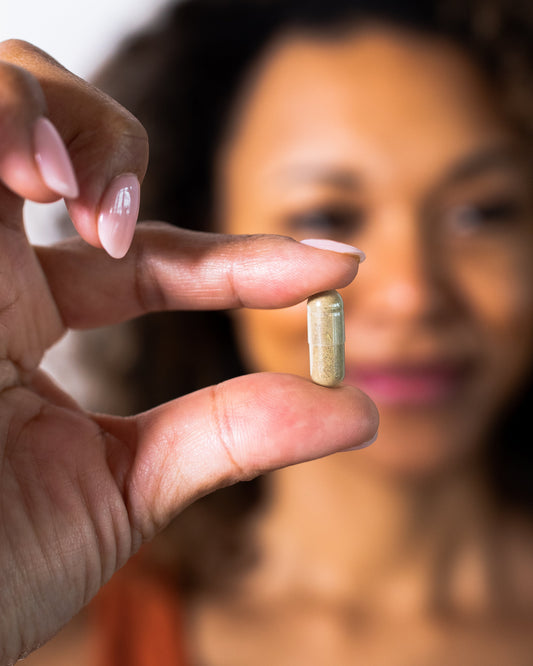You probably don’t think about your pelvic floor all that often, but strengthening it just like any other muscle group can seriously up your game in the bedroom.
Research shows that men who regularly perform pelvic floor exercises experience improved erectile function and better control over ejaculation. In fact, a study in the British Journal of Urology International found that pelvic floor exercises can be an effective treatment for erectile dysfunction, with significant improvement observed in about 40% of participants.
Beyond improving your sexual performance, a strong pelvic floor also supports bladder and bowel health, helping to prevent incontinence. Sound good? Below are the best pelvic floor exercises for men and how to do them.
About Your Pelvic Floor Muscles
Your pelvic floor muscles are a group of muscles that stretch from your pubic bone at the front to the base of your spine at the back. These muscles play a crucial role in supporting your bladder, bowel, and, for men, the prostate. They help control the release of urine and feces and are essential for sexual function.
When these muscles are strong and well-conditioned, they enhance your overall core stability, improve your control over urinary and bowel movements, and contribute to better sexual health.
How to Identify Your Pelvic Floor Muscles
One simple way to locate your pelvic floor muscles is to try stopping the flow of urine midstream or refraining from passing gas. The muscles you use to do this are your pelvic floor muscles. It's important to practice identifying these muscles while not actually urinating to avoid disrupting your normal bladder habits.
Once you’re familiar with the sensation, you can perform pelvic floor exercises more effectively to strengthen these crucial muscles.
Pelvic Floor Exercises for Men
1. Kegel Exercise
Named after Dr. Arnold Kegel, this exercise involves repeated contraction and relaxation of the pelvic floor muscles. The benefit from doing kegel exercises for men is improving bladder control, preventing incontinence, and enhancing sexual health and performance.
- Identify your pelvic floor muscles by pretending to stop the flow of urine.
- Contract these muscles for a count of 3 to 5 seconds.
- Relax the muscles completely for a count of 3 to 5 seconds.
- Repeat this cycle 10 to 15 times in a row.
- Aim to perform 4 times a day.
Tip: Remember don’t hold your breath. Try to breathe normally and avoid tightening your abdomen, buttocks, or thighs.
2. Pelvic Tilt
This exercise combines the benefits of traditional pelvic tilts with Kegel contractions to maximize the strengthening of your pelvic floor muscles. In addition to the benefits of Kegels, it also helps improve core stability and lower back strength.
- Lie on your back with your knees bent and feet flat on the floor, hip-width apart.
- Place your arms at your sides with palms facing down.
- Perform a Kegel contraction by tightening your pelvic floor muscles.
- Tilt your pelvis upward, flattening your lower back against the floor. Your hips should lift slightly off the ground.
- Hold the tilt and Kegel contraction for 3 to 5 seconds.
- Relax your pelvic floor muscles and lower your hips back to the starting position.
- Repeat this cycle 10 to 15 times.
- Aim to perform 3 times a day.
3. Glute Bridge
The third step in Kegel variations, this advanced version strengthens both your pelvic floor and glute muscles simultaneously.
- Lie on your back with your knees bent and feet flat on the floor, hip-width apart.
- Place your arms at your sides with palms facing down.
- Perform a Kegel contraction and tighten your pelvic floor muscles.
- Lift your hips toward the ceiling, forming a straight line from your shoulders to your knees. Keep your glutes and core engaged.
- Hold the bridge position and maintain the Kegel contraction for 3 to 5 seconds.
- Lower your hips back down to the starting position while relaxing your pelvic floor muscles.
- Repeat this cycle 10 to 15 times.
- Aim to perform 3 times a day.
4. Puppy Pose
Certain yoga poses, like puppy pose, can be adapted to engage and strengthen your pelvic floor muscles. This pose helps to stretch the spine and shoulders while allowing you to focus on contracting and relaxing your pelvic floor muscles.
- Begin on all fours with your knees under your hips and your hands under your shoulders.
- Walk your hands forward, lowering your chest toward the floor while keeping your hips lifted.
- Rest your forehead on the mat and extend your arms straight ahead.
- Perform a Kegel contraction by tightening your pelvic floor muscles.
- Hold the contraction for 3 to 5 seconds while maintaining the stretch.
- Relax your pelvic floor muscles for 3 to 5 seconds.
- Repeat this cycle 10 to 15 times while holding the pose.
Tip: Aim to perform this exercise as part of your daily routine, incorporating it into your yoga practice or as a standalone exercise.
5. Cat-Cow
The cat-cow yoga pose is a fluid movement between two poses that helps to improve flexibility and spinal alignment.
- Begin on all fours with your wrists under your shoulders and your knees under your hips.
- Inhale deeply, arch your back, and lift your head and tailbone toward the ceiling.
- Perform a Kegel contraction and tighten your pelvic floor muscles as you hold cow pose for 3 to 5 seconds.
- Next, exhale, round your spine, and tuck your chin toward your chest while tucking your tailbone under.
- Relax your pelvic floor muscles during this 3- to 5-second hold.
- Continue alternating between cat and cow poses, coordinating your Kegel contractions with cow pose and relaxation with cat pose.
- Repeat this cycle 10 to 15 times.
Benefits of Pelvic Floor Exercises
Regularly performing pelvic floor exercises for men can improve bladder control, reducing the risk of incontinence. They also play a significant role in enhancing sexual health by boosting erectile function and providing better control over ejaculation. Additionally, strong pelvic floor muscles strengthen your core, support lower back health, and prevent pelvic organ prolapse.
Want to provide additional support to your pelvic floor? Dr. Sebi's Testo helps provide overall wellness by improving circulation, strengthening the reproductive system, and improving prostate health.
Frequently Asked Questions
1. How do I know if my pelvic floor is weak?
Signs of a weak pelvic floor include difficulty controlling your bladder or bowels, experiencing leakage when you sneeze, cough, or exercise, and reduced sexual sensation or erectile dysfunction.
2. Who shouldn’t do pelvic floor exercises?
While pelvic floor exercises are beneficial for many, they may not be suitable for everyone. Individuals with certain pelvic pain conditions, recent surgery, or severe pelvic organ prolapse should consult a healthcare professional before starting these exercises.
3. How long does it take for pelvic floor exercises to work for men?
Men may start to notice improvements from pelvic floor exercises within a few weeks, but it can take about 3 to 6 months of consistent practice to experience significant benefits. The exact timeline depends on the current strength of your pelvic floor muscles and how regularly you perform the exercises.


















































